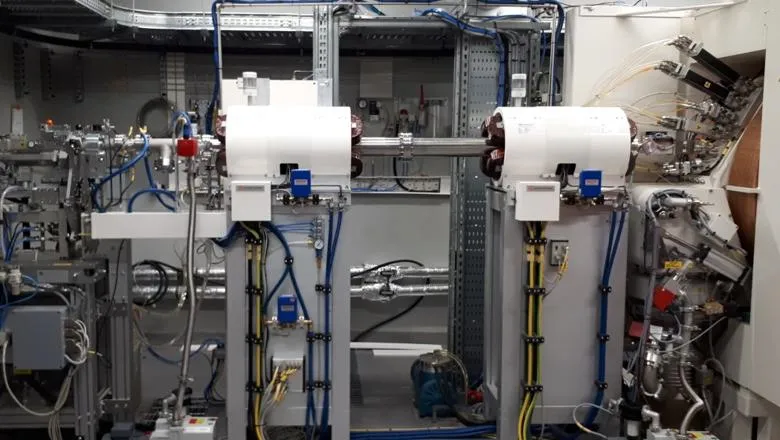Enabling production of fluoride-18 from the new PETtrace cycloctron for clinical use is an important step towards bringing all of the Positron Emitting Radiopharmecutical Laboratory (PERL), the new cyclotron and radiochemistry facility, online."
Prof Alexander Hammers, Head of the PET Centre and Professor of Imaging and Neuroscience at King’s
20 May 2020
New PETtrace cyclotron enables more reliable in-house production of FDG tracer for use in cancer scanning
The PET Centre has launched its new PETtrace cyclotron to reliably produce fluoride-18 for PET scanning.

The King’s College London & Guy’s and St Thomas’ PET Centre, part of the School of Biomedical Engineering & Imaging Sciences, has now launched the new PETtrace high-energy cyclotron, a particle accelerator which enables production of radioactive fluoride-18 on demand.
Fluoride-18 is a fluoride radioisotope used in the production of [18F]fluorodeoxyglucose (FDG), a radioligand (radioactive biochemical substance) commonly used in positron emission tomography (PET) scanning. The Centre requires a consistent and reliable supply of FDG to maintain clinical and research services across all disciplines, which include oncology, neurology and cardiology.
Professor Hammers continued: “This milestone already enables more reliable supply independently of the existing 28-year cyclotron and external deliveries. It will support our imaging, administrative and clinical teams in providing a more reliable patient service and provides experience with the new machine which will be invaluable when moving towards research radioligand production in PERL.”
Bringing forward the launch of the new cyclotron to ensure a reliable supply of FDG was a complex operation. To do all of this safely required the cooperation of physics, chemistry, management and radiation protection teams.
The 15-tonne machine now supplies radioactive raw material which is transported to hot cells, thick lead-lined fume hoods. Inside, synthesis modules are used to make, test and dispense radioligands. The new cyclotron is expected to serve the Centre for 20 -25 years.
Professor Hammers said the launch had strengthened cross-disciplinary relationships at the Centre, and provided a motivational boost for staff who continue to provide essential services during COVID-19.
The PET Centre is a collaboration between King’s College London and Guy’s and St Thomas’ Hospital, and is the leading PET centre in the UK. The Centre provides clinical services for patients and also supports research with collaborators in the School of Biomedical Engineering & Imaging Sciences, the broader Faculty of Life Sciences & Medicine at King’s, and other partners.

